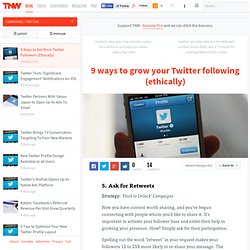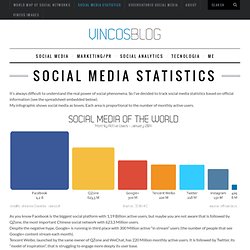

Les sept habitudes des gens qui réussissent. Photos Les 10 marques de sport les plus puissantes. 25 Sneaky Online Tools and Gadgets to Help You Spy on Your Competitors. Even before you entered into the world of “business”, you were watching your competition. Whether it was in a classroom or on a sports team, you not only wanted to keep up, you wanted to know where the marker was set so you could go one step further. It was about finding new opportunities and setting new goals based on someone you aspired to beat.
At this time, when search is so important and detailed, and the Internet has grown so extensively, you have tons of different factors to consider when spying on your competition. This is where marketing tools come into play. In many cases, tools that help you monitor your own web performance also can help you gather data on your competition. 1. This is a very simple and easy-to-use tool that will send reports right to your inbox. Best Ways to Use This Tool: Get competitors’ backlinksMonitor social (or other website) mentions of your companyMonitor keyword mentions Price: Free 2. 3. This is a tool that’s all about Twitter. 4. 5. 6. 7. 8. 9. 10.
Facebook récompense la pertinence. Depuis l’annonce faite par Facebook, en décembre 2013, de réduire la diffusion naturelle des publications de pages, les articles se succèdent pour dénoncer au mieux une trahison, au pire : la fin du marketing sur Facebook.

Et pourtant, Facebook est plus que jamais la pierre angulaire du marketing sur les réseaux sociaux. The six most interesting things that happened in media this year, according to me. The year-end roundup post has become something of a New Year tradition, to the point where some might argue they have become a cliché.

But just because they are ubiquitous doesn’t mean they aren’t worth something — at their best, I think they force us to sit back and take stock of what happened during the year, and often patterns will emerge that even we might not have fully appreciated at the time. In that spirit, I decided to take a look at some of the things that I found most interesting in the media-sphere this year, and what I came up with reinforced my view that despite all the turmoil and upheaval, this is a tremendously exciting time to be a journalist — or for that matter, anyone who is interested in journalism and the flow of information.
Like my friend Dan Gillmor, I am enormously optimistic about what is happening, despite (or in some cases because of) the disruption. Evan Williams Post and thumbnail photos courtesy of Shutterstock / noporn. 9 ways to grow your Twitter following (ethically) 5.

Ask for Retweets Strategy: ‘Flock to Unlock’ Campaigns Now you have content worth sharing, and you’ve begun connecting with people whom you’d like to share it. It’s important to activate your follower base and enlist their help in growing your presence. How? Spelling out the word “retweet” in your request makes your followers 12 to 23X more likely to re-share your message. A ‘Flock to Unlock’ promotion adds an element of urgency to your calls to action. 6. Facebook change les règles des concours: plus besoin d'application! Voici ce que ce changement implique. Avec cette mesure allant à contresens de ce qui prévalait auparavant quant aux règles de Facebook pour faire des concours , Facebook vient de permettre les concours en dehors du cadre d'une application.
Voici les différentes méthodes qui peuvent maintenant être utilisées pour participer à un concours (outre l'application) : Publier sur le mur d'une page Commenter/aimer une publication de la page Envoyer un message privé à la page Utiliser le « J'aime » comme mécanisme de vote Exemple : Facebook dit avoir procédé à ce changement pour permettre aux entreprises de toutes les tailles de faire des concours sur Facebook. Ce changement est très surprenant quand on sait qu'il existe plusieurs solutions presque gratuites pour faire des concours Facebook . Le plus inquiétant est qu'il est difficile pour une page d'obtenir le nom et l'information de contact des participants.
Social Media Statistics. It’s always difficult to understand the real power of social phenomena.

So I’ve decided to track social media statistics based on official information (see the spreadsheet embedded below). My infographic shows social media as boxes. Each area is proportional to the number of monthly active users. As you know Facebook is the biggest social platform with 1,19 Billion active users, but maybe you are not aware that is followed by QZone, the most important Chinese social network with 623,3 Million users. Despite the negative hype, Google+ is running in third place with 300 Million active “in stream” users (the number of people that see Google+ content stream each month). If you want to see the geographic distribution visit The World Map of Social Network. The rate of adoption is defined as the relative speed with which members of a social system adopt an innovation. Later Geoffrey Moore (Crossing the Chasm, 1991) proposed a variation on Rogers’ model.
55 Interesting Social Media Infographics. What Is EdgeRank? 10 Things you Should NEVER Say During Presentations.